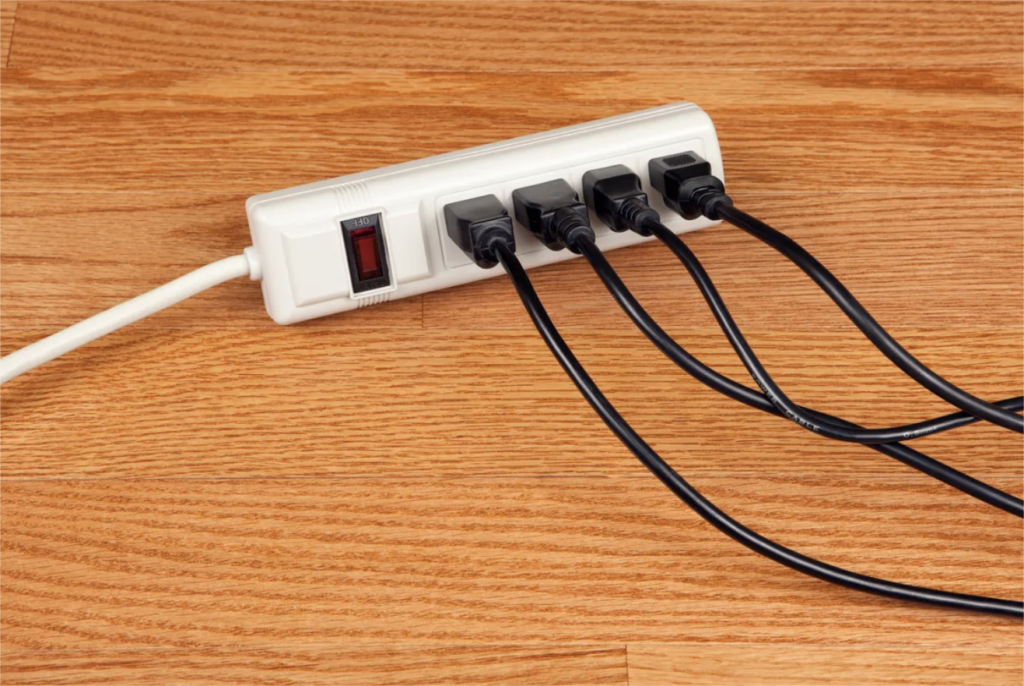Is a Power Strip a Surge Protector?

Sometimes, we use the terms “power strip” and “surge protector” interchangeably, but they’re not always the same. A power strip simply adds more outlets, while a surge protector also guards against unexpected voltage spikes. Understanding the difference is key to protecting your pricey electronics from random surges and gradual damage.
Let’s explore what sets power strips and surge protectors apart, why voltage spikes occur, which devices benefit most from surge protection, and the features to look for in a quality surge protector.
What Sets a Power Strip Apart from a Surge Protector?
A power strip distributes electricity across multiple outlets, but it doesn’t automatically protect against sudden voltage spikes. A true surge protector includes internal components (like MOVs) that absorb or redirect harmful surges.
While all surge protectors are power strips, not all power strips are surge protectors. A plain power strip might have no protective circuitry at all. You simply plug in and get extra sockets. In contrast, a surge protector has built-in mechanisms to clamp or divert dangerous electrical spikes before they reach your devices. Look for a UL rating (such as UL 1449 in the US) or other certification, along with indicator lights that show when protection is active.
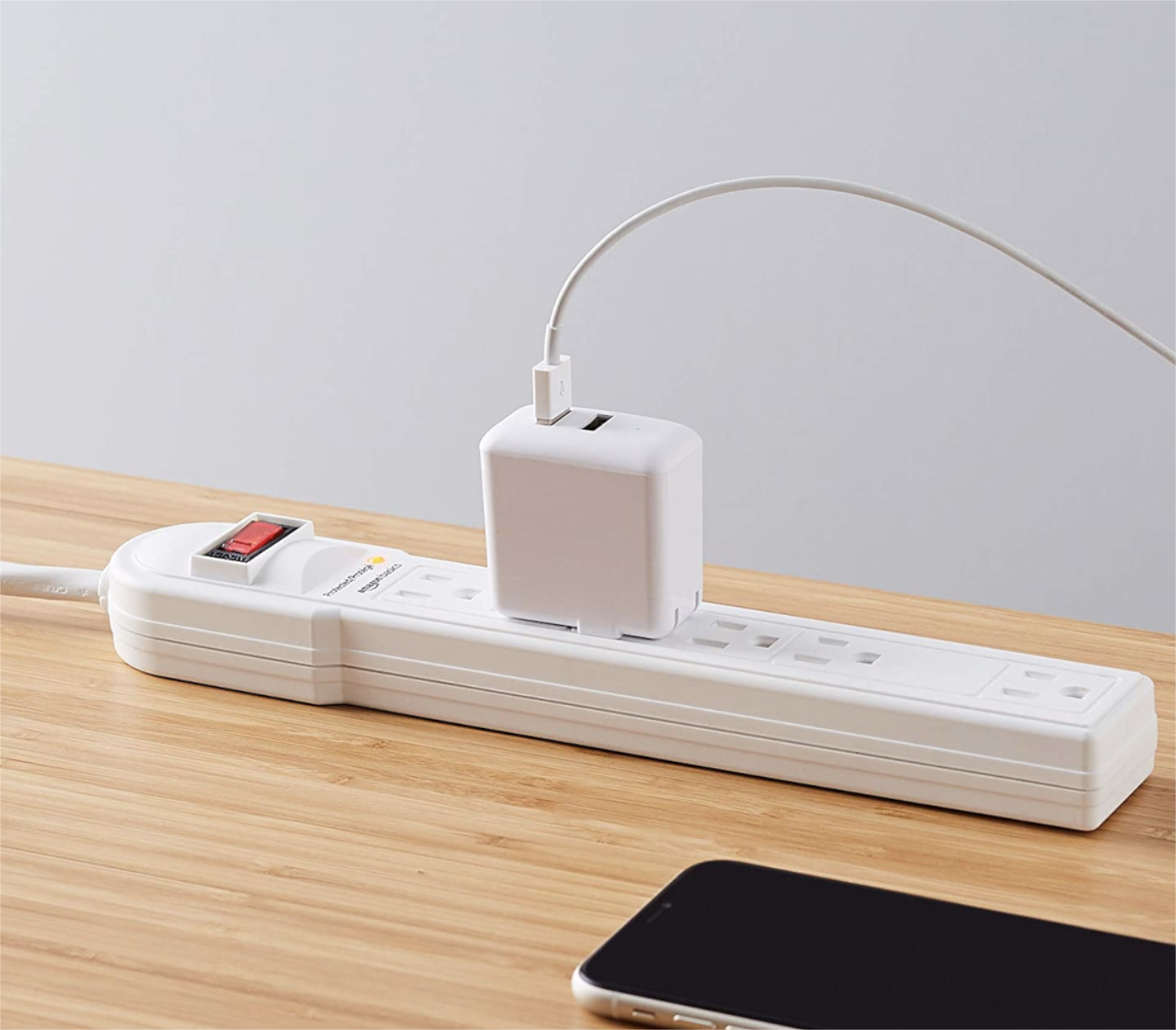
A typical power strip is really just a row of outlets. It may have an on/off switch or a built-in circuit breaker that cuts power if you overload it (pulling too many amps). That breaker only prevents overheating due to excessive current draw—it doesn’t shield against sudden voltage spikes that can damage sensitive electronics.
Surge Protector Basics
- MOVs (Metal Oxide Varistors): Absorb or redirect extra voltage when a surge hits.
- Indicator Lights: Often show if the MOVs are still functional. If the light is off, the strip may still provide power but no longer offers surge protection.
Why the Confusion?
Surge protectors often look like traditional power strips—both can have multiple outlets and a switch. Marketing terms can blur the lines, leading many consumers to assume every power strip includes surge protection. That’s why checking the packaging or label is crucial.
Subtle Price Differences
Surge protectors typically cost more than a basic power strip, reflecting the added protective components. This extra upfront cost can save you hundreds or thousands in potential device replacements1 if a sudden spike hits.
By recognizing these differences, you’ll avoid relying on a standard power strip for surge protection it doesn’t provide. If you need real protection, pick a device specifically labeled as a surge protector with a verified joule rating2 and certifications.
Why Do Voltage Spikes and Surges Happen?
Voltage spikes can come from storms, utility grid fluctuations, or even large appliances switching on and off. These sudden surges can degrade or destroy electronic components.
Lightning strikes are the most dramatic cause of surges, yet everyday events—like a refrigerator’s compressor kicking in—can create smaller, repeated spikes. Each spike stresses your device’s internal circuitry, potentially leading to data corruption or premature hardware failure. Even if you rarely notice flickering lights or tripped breakers, these mini-surges add up over time, slowly wearing down sensitive electronics.
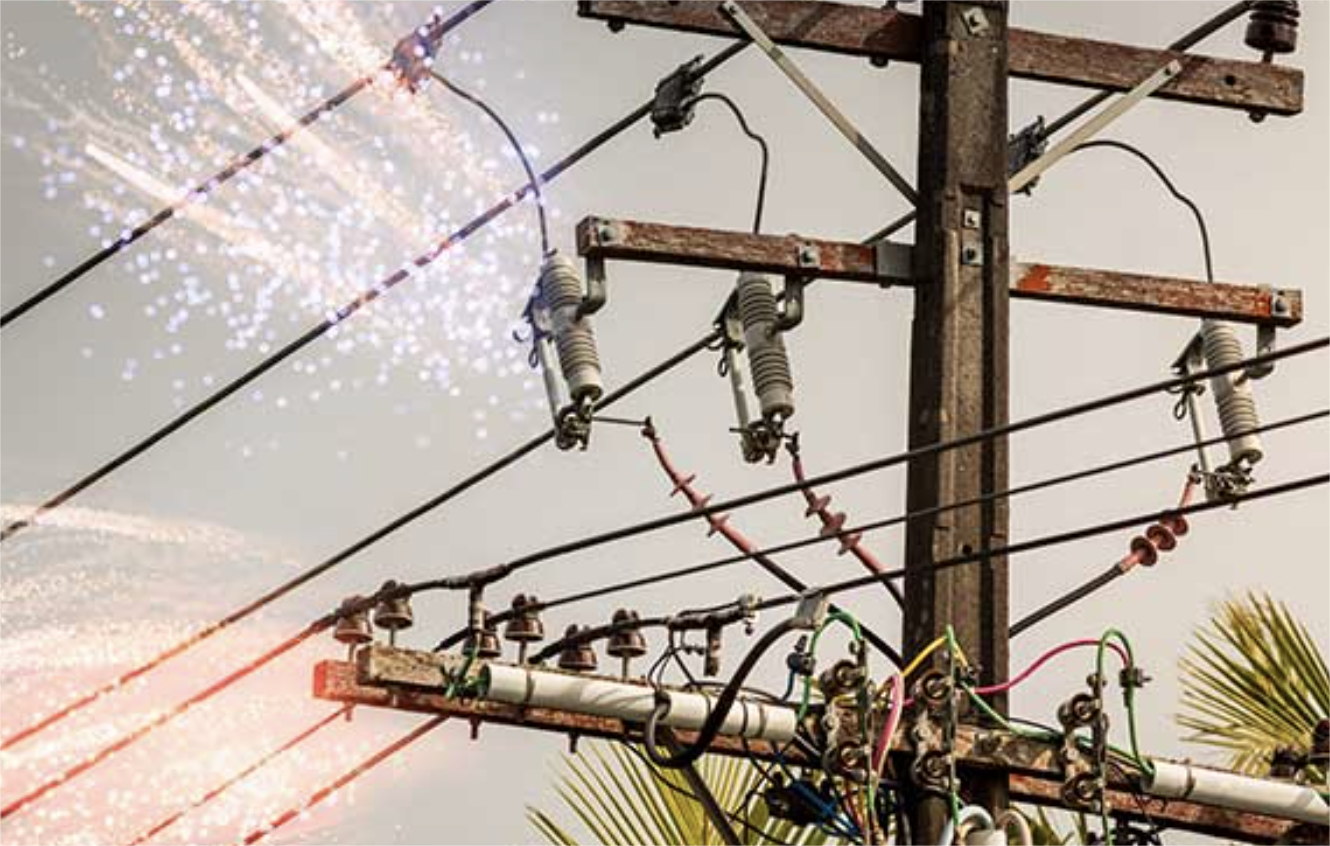
It’s not just lightning that you need to worry about—though that’s the worst-case scenario, sending a massive jolt through power lines if it strikes near transformers or overhead cables. Utility maintenance, grid switching, or faults in local substations can also inject unusual voltage levels into your home’s wiring.
Everyday Appliance Cycling
Large appliances like air conditioners, washers, or dryers draw heavy current when they start up. This abrupt shift in demand can cause minor fluctuations or spikes that travel through the circuit. While each small surge may not fry your TV or computer immediately, the cumulative effect weakens their circuitry3 over time.
Grid Instability
In regions with older infrastructure, power lines can be more susceptible to voltage inconsistencies4. Brownouts (temporary drops in voltage) and surges can follow each other in quick succession. Surges might last just a fraction of a second, yet that’s enough to stress delicate electronic components, from laptop motherboards to LED TV panels.
Why Surge Protection Matters
By plugging your devices into a quality surge protector, you provide a buffer against these spikes. The protector’s internal MOVs clamp down on the extra voltage, redirecting it safely to ground rather than letting it rush into your devices. This means that whether it’s a mild glitch or a more intense surge, your electronics remain guarded against immediate damage and cumulative wear.
Which Electronics Need Surge Protection the Most?
Any electronic with sensitive circuitry or high replacement cost benefits from surge protection. Think TVs, computers, gaming consoles, and smart home gadgets.
It’s often the pricey or delicate devices that merit priority: 4K TVs, gaming PCs, Wi-Fi routers, and home theater receivers. A basic lamp might survive spikes without much fuss, but complex electronics can fail quickly if exposed to repeated surges. Appliances with microprocessors—like modern refrigerators—also need protection. In short, if it has a circuit board or an integrated chip, a surge could ruin it. Using a specialized protector reduces this risk significantly.
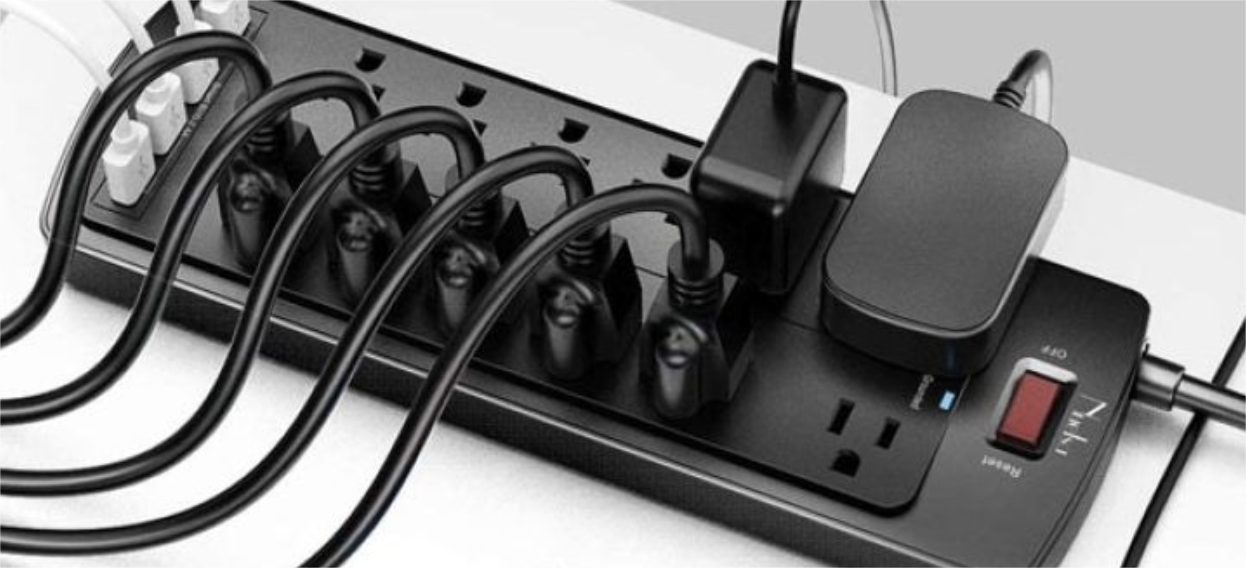
These days, most household appliances have some sort of electronic board, whether it’s a smart washer that connects to Wi-Fi or a fridge with a digital display. Even older televisions or stereo systems contain delicate components. The cost of repairing or replacing them often outweighs the price of a good surge protector.
High-Value Targets
- Computers and Laptops: Contain CPUs, RAM, GPUs—any surge can corrupt data or damage motherboards.
- Home Theater Equipment: Receivers, speakers with built-in amps, projectors. Replacing these isn’t just costly; it’s also inconvenient.
- Gaming Consoles: Complex internals that hate voltage inconsistencies. A single big spike might brick your console.
Lesser-Known Cases
Office equipment—like printers and external hard drives—may not seem fragile, but a surge at the wrong time can wreck their internal boards or corrupt a print job. Even your modem or router, crucial for internet access, is susceptible to minor power fluctuations5.
Multiport Protection
Surge protectors with coaxial and Ethernet jacks shield not just AC power lines but also phone or cable lines from surges. This is especially useful in areas with frequent storms or if your ISP’s infrastructure experiences irregularities. By covering all entry points (power, data, coax), you ensure a holistic defense for your system6.
Ultimately, if it’s expensive, complicated, or critical to your daily routine, plugging it into a surge protector is a wise move.
What Key Features Should I Look for in a Surge Protector?
From joule ratings to clamping voltage and warranty, certain specs define how effectively a surge protector shields your gadgets.
High joule ratings (1,000+ joules for moderate setups, more for bigger home theaters) provide ample energy absorption. Low clamping voltage (330–400V) ensures faster action against surges. Also, consider LED indicators showing ongoing protection and a built-in circuit breaker or reset switch for overloads. If you’re protecting big gaming rigs or multiple devices, ensure there’s enough spacing between outlets to fit bulky plugs. Look for UL 1449 or equivalent certifications, ensuring tested reliability.
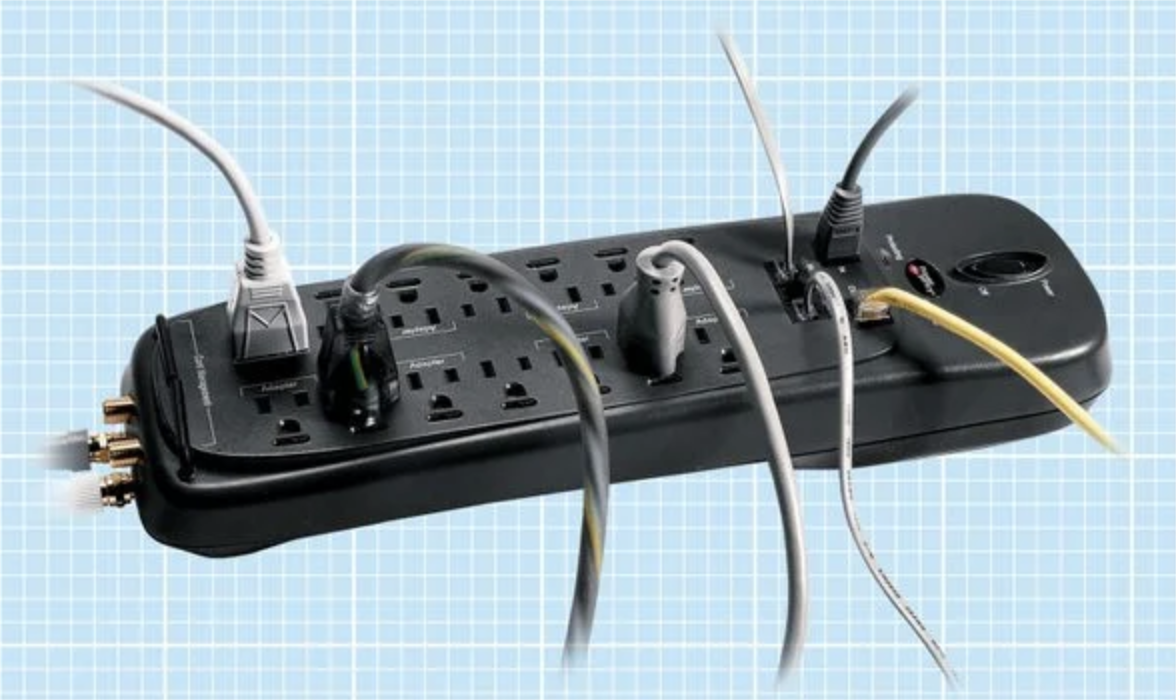
-
Joule Rating: This measures how much surge energy the protector can absorb. A higher rating generally indicates longer-lasting protection. For smaller home office setups, around 1,000–2,000 joules works. For home theater with multiple components, 2,000+ joules is advisable.
-
Clamping Voltage: It specifies the voltage level at which the surge protector starts diverting excess power. A lower clamping voltage (e.g., 330V) kicks in earlier, safeguarding your gear more quickly.
-
Response Time: The faster the response (nanoseconds to a few microseconds), the less chance a surge has to flow through. Most modern protectors react almost instantaneously, but checking the exact time can be helpful if you own highly sensitive equipment.
-
Number & Layout of Outlets: Surge protectors come with anywhere from 4 to 12 outlets or more. If you have large power bricks (like for a printer or certain laptop chargers), widely spaced sockets prevent overlap. Some models include rotating outlets or built-in USB ports for charging phones and tablets.
-
Warranty & Connected Equipment Coverage: Well-known brands often offer connected equipment warranties. If their protector fails to stop a surge, they’ll cover repairs or replacements up to a certain amount. This can be a big deal if you’re protecting expensive hardware.
UL Certification
Ensure the device meets recognized standards like UL 14497 in the U.S. This indicates it has undergone tests confirming it can safely handle surges up to its rated capacity without posing a fire or shock risk.
In short, don’t just grab the cheapest model at the store. Evaluate these specs to match your electronics’ needs, ensuring robust and long-lasting defense against unpredictable voltage spikes8.
Conclusion
A power strip alone can’t prevent damaging voltage spikes—only a proper surge protector can. Know the differences, understand why surges happen, and choose a protector with ample joules, low clamping voltage, and reliable brand backing. With the right safeguards in place, you’ll keep your favorite electronics running strong.
-
Surge protectors can prevent costly device replacements by shielding your electronics from damaging power surges. ↩
-
A higher joule rating means better protection against power surges, safeguarding your electronics more effectively. ↩
-
Exploring the cumulative effect of power surges on electronics can highlight the importance of preventive measures like surge protectors. ↩
-
Learning about the causes of voltage inconsistencies can help you better prepare and protect your home electronics from potential damage. ↩
-
Learn about the impact of minor power fluctuations on your electronics and how to safeguard your devices effectively. ↩
-
Understand the importance of a holistic defense strategy in protecting your electronic systems from various types of power surges and fluctuations. ↩
-
Understanding UL 1449 helps ensure your surge protector meets safety standards, protecting your devices from voltage spikes effectively. ↩
-
Learning about voltage spikes protection can save your electronics from unexpected damage, ensuring their longevity and reliability. ↩

